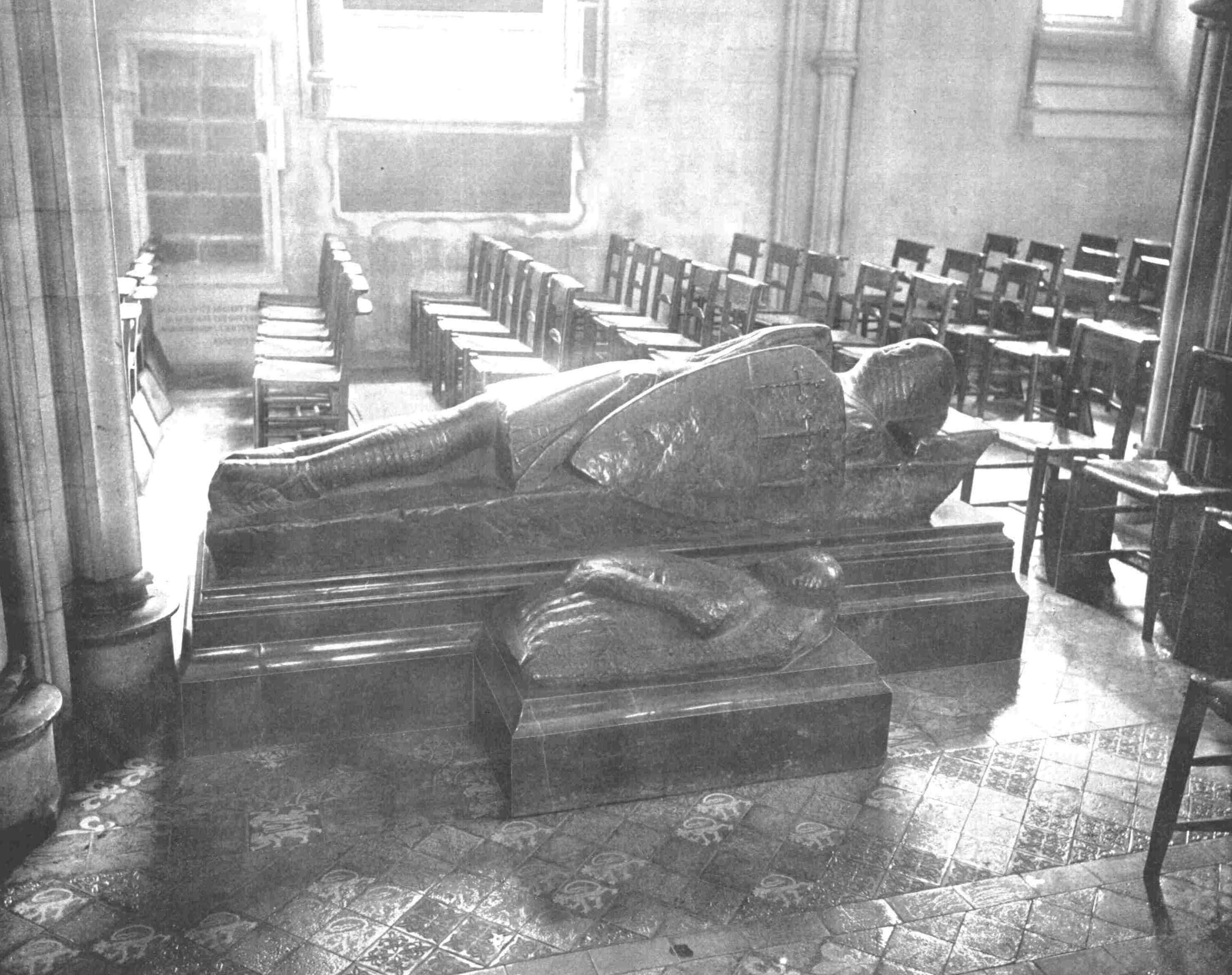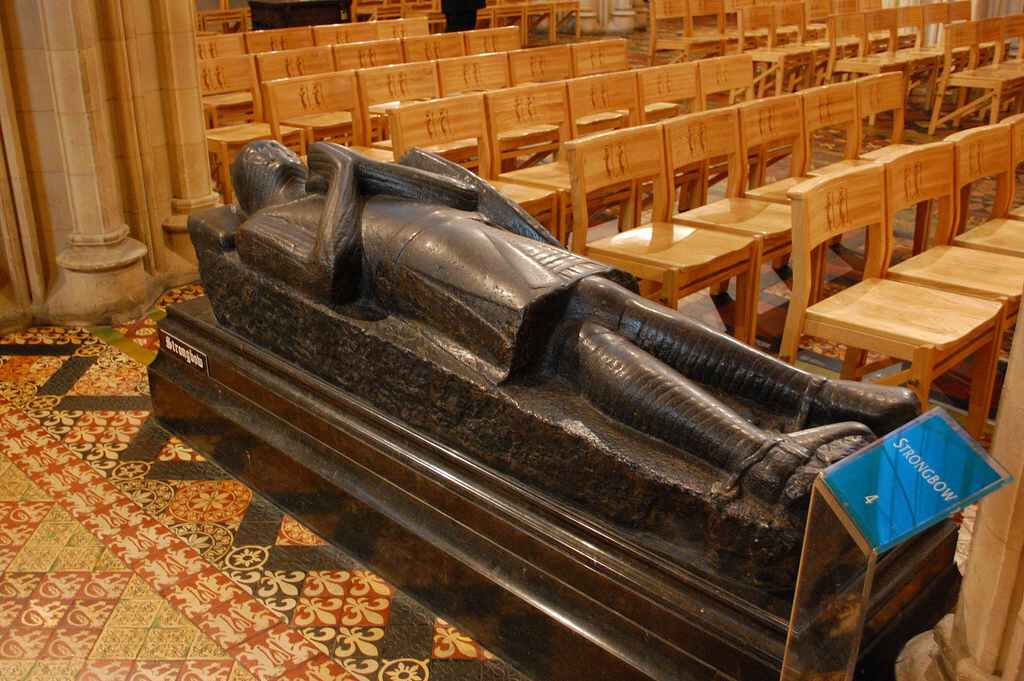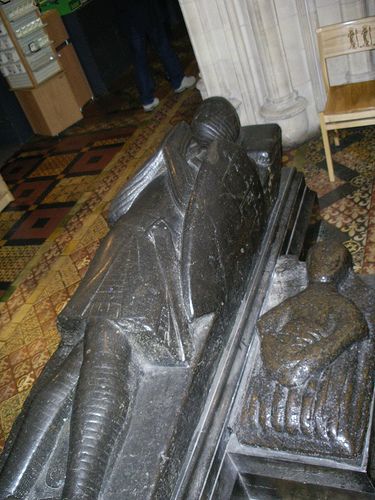
Richard de Clare, "Strongbow", 2nd Earl of Pembroke,
The effigy was in the past located beside the plaque at the wall.
In the 19th century, the effigy was moved away from the wall.
The plaque is still at the wall.
"Strongbow's tomb" is
on the S side of the
Nave.
Go in the entrance, go to RHS, it is a short distance up on the left.
See location no.5 on map.


"Strongbow's tomb", Christ Church, Dublin.
From [Finerty, 1898].
The effigy has been moved out from the wall.
Note plaque in background.
See larger
and full size.

"Strongbow's tomb", Christ Church, Dublin.
Photo 2003.
From here.
See terms of use.

"Strongbow's tomb", Christ Church, Dublin.
Photo 2008.
See full size.
From Alex Lecea.
See terms of use.
See 2016 shot.

"Strongbow's tomb", Christ Church, Dublin.
Photo 2007. From here.
Used with permission.
See 2016 shot.
And shot from behind.
See 2016 shots of
small effigy
and shield.

|
"This: ayncyent: monument: of:
Rychard: Strangbowe:
called: comes: Strangvlensis: Lord: of: Chepsto: and: Ogny:
the: fyrst: and: pryncypall: invader: of: Irland: 1169: Qui: Obiit: 1177.:
The: monument: was: brocken: by: the: fall: of: the: roff: and: bodye: of: Christeschurch: in: Anna: 1562: and: set: up: agayne: at: the: chargys: of: the: Right: Honorable: Sr: Henry: Sydney: Knyght: of: the: noble: order: L: President: of: Wailes: L: Deputy: of: Irland: 1570." |

Another stone in the wall beside the above, with an inscription about
the collapse of part of the cathedral in 1562.
It says that 1562 was
when
Thomas Radclyffe, 3rd Earl of Sussex
was Lord Lieutenant.
See
p.10
of
[Finlayson, 1878].
Photo 2016.
See full size.
See wider shot.
Please donate to support this site.
I have spent a great deal of time and money on this research.
Research involves travel and many expenses.
Some research "things to do"
are not done for years, because I do not have the money to do them.
Please Donate Here
to support the ongoing research and
to keep this website free.